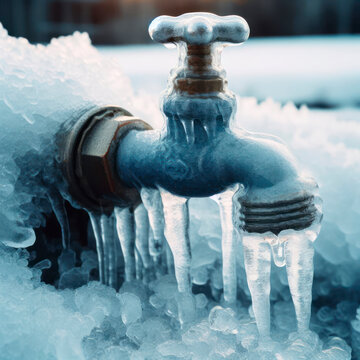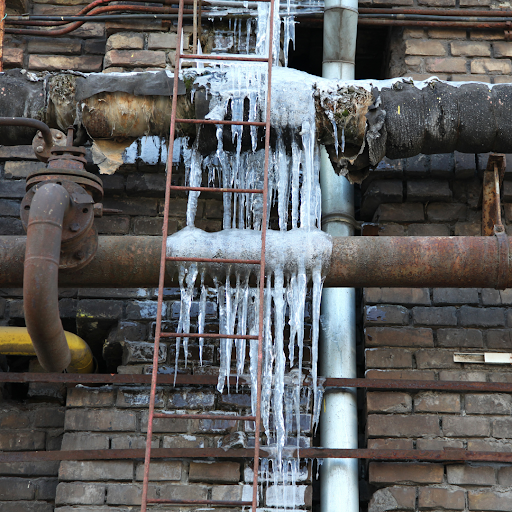Protecting Against Frozen Plumbing: Effective Strategies for Cold Weather
Protecting Against Frozen Plumbing: Effective Strategies for Cold Weather
Blog Article
What are your thoughts about How to prepare your home plumbing for winter weather?

Cold weather can damage your pipes, specifically by freezing pipes. Here's exactly how to stop it from occurring and what to do if it does.
Intro
As temperature levels decrease, the danger of icy pipelines rises, possibly leading to pricey repair work and water damages. Comprehending exactly how to avoid icy pipes is crucial for house owners in cool climates.
Comprehending Icy Pipes
What triggers pipes to freeze?
Pipelines freeze when exposed to temperatures listed below 32 ° F (0 ° C) for prolonged periods. As water inside the pipes freezes, it expands, taxing the pipe wall surfaces and potentially creating them to break.
Risks and problems
Frozen pipes can bring about water supply interruptions, home damages, and expensive repair services. Burst pipelines can flood homes and cause substantial structural damages.
Indicators of Frozen Piping
Determining icy pipes early can stop them from bursting.
Just how to determine icy pipelines
Look for lowered water flow from faucets, uncommon smells or sounds from pipelines, and noticeable frost on exposed pipes.
Prevention Tips
Insulating susceptible pipelines
Wrap pipes in insulation sleeves or make use of heat tape to protect them from freezing temperatures. Concentrate on pipelines in unheated or external locations of the home.
Home heating methods
Keep interior spaces effectively heated up, especially areas with plumbing. Open cabinet doors to enable warm air to circulate around pipes under sinks.
Shielding Outdoor Pipes
Garden hoses and outside faucets
Detach and drain pipes garden hose pipes before winter months. Set up frost-proof faucets or cover exterior taps with shielded caps.
What to Do If Your Pipes Freeze
Immediate activities to take
If you believe frozen pipelines, maintain faucets available to soothe stress as the ice melts. Use a hairdryer or towels soaked in warm water to thaw pipelines slowly.
Long-Term Solutions
Architectural adjustments
Take into consideration rerouting pipes far from exterior wall surfaces or unheated areas. Add additional insulation to attics, cellars, and crawl spaces.
Updating insulation
Purchase top quality insulation for pipes, attics, and walls. Appropriate insulation helps keep consistent temperature levels and reduces the danger of icy pipelines.
Conclusion
Avoiding frozen pipelines calls for aggressive actions and fast feedbacks. By understanding the reasons, indications, and preventive measures, home owners can secure their plumbing throughout cold weather.
5 Ways to Prevent Frozen Pipes
Drain Outdoor Faucets and Disconnect Hoses
First, close the shut-off valve that controls the flow of water in the pipe to your outdoor faucet. Then, head outside to disconnect and drain your hose and open the outdoor faucet to allow the water to completely drain out of the line. Turn off the faucet when done. Finally, head back to the shut-off valve and drain the remaining water inside the pipe into a bucket or container. Additionally, if you have a home irrigation system, you should consider hiring an expert to clear the system of water each year.
Insulate Pipes
One of the best and most cost-effective methods for preventing frozen water pipes is to wrap your pipes with insulation. This is especially important for areas in your home that aren’t exposed to heat, such as an attic. We suggest using foam sleeves, which can typically be found at your local hardware store.
Keep Heat Running at 65
Your pipes are located inside your walls, and the temperature there is much colder than the rest of the house. To prevent your pipes from freezing, The Insurance Information Institute suggests that you keep your home heated to at least 65 degrees, even when traveling. You may want to invest in smart devices that can keep an eye on the temperature in your home while you’re away.
Leave Water Dripping
Moving water — even a small trickle — can prevent ice from forming inside your pipes. When freezing temps are imminent, start a drip of water from all faucets that serve exposed pipes. Leaving a few faucets running will also help relieve pressure inside the pipes and help prevent a rupture if the water inside freezes.
Open Cupboard Doors
Warm your kitchen and bathroom pipes by opening cupboards and vanities. You should also leave your interior doors ajar to help warm air circulate evenly throughout your home.

Do you appreciate reading about Helpful Tips to Prevent Frozen Pipes this Winter? Put a remark directly below. We'd be happy to know your reactions about this post. In hopes that you visit us again soon. Liked our piece of writing? Please quickly share it. Help someone else discover it. We cherish reading our article about How to prepare your home plumbing for winter weather.
Schedule Appointment Report this page